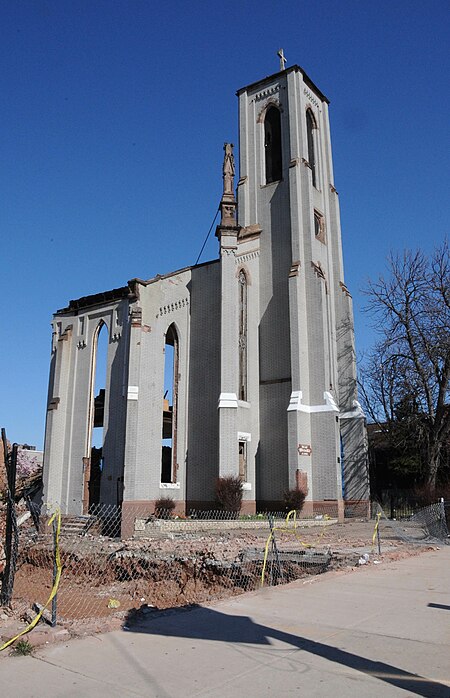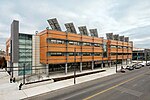Queen of Angels Church (Newark)
19th-century Roman Catholic church buildings in the United StatesAfrican-American Roman Catholic churchesChurches on the National Register of Historic Places in New JerseyGothic Revival church buildings in New JerseyNational Register of Historic Places in Newark, New Jersey ... and 6 more
New Jersey Register of Historic PlacesNew Jersey Registered Historic Place stubsNew Jersey church stubsRoman Catholic churches completed in 1854Roman Catholic churches in Newark, New JerseySociety of African Missions

Queen of Angels Church (formerly known as St. Peter's Church) was a historic Black Catholic church on Belmont Avenue (now Irvine Turner Blvd) at Morton Street in Newark, New Jersey. It was the first Catholic parish for African Americans in the Archdiocese of Newark.
Excerpt from the Wikipedia article Queen of Angels Church (Newark) (License: CC BY-SA 3.0, Authors, Images).Queen of Angels Church (Newark)
Livingston Street, Newark
Geographical coordinates (GPS) Address External links Nearby Places Show on map
Geographical coordinates (GPS)
| Latitude | Longitude |
|---|---|
| N 40.733611111111 ° | E -74.189166666667 ° |
Address
Queen of Angels Roman Catholic Church
Livingston Street
07103 Newark
New Jersey, United States
Open on Google Maps



